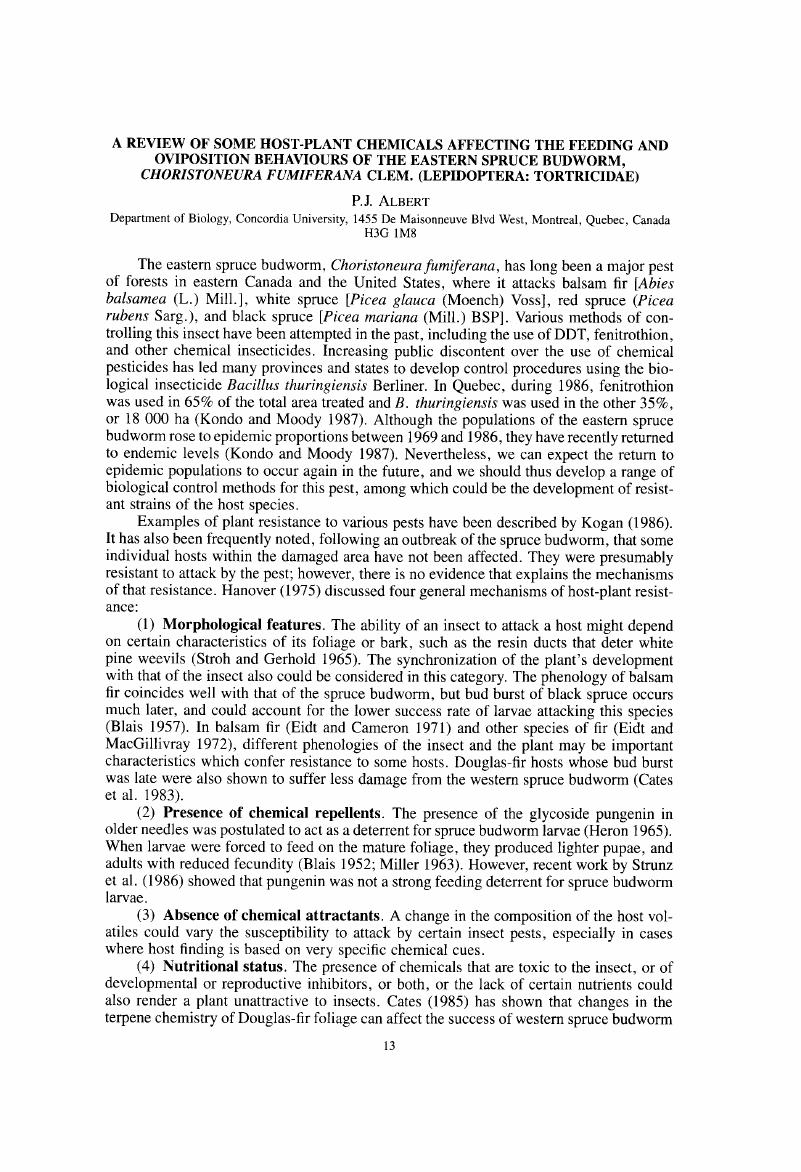Crossref Citations
This article has been cited by the following publications. This list is generated based on data provided by Crossref.
Clancy, Karen M.
Wagner, Michael R.
and
Reich, Peter B.
1995.
Ecophysiology of Coniferous Forests.
p.
125.
Ennis, Darragh
Despland, Emma
Chen, Fei
Forgione, Pat
and
Bauce, Eric
2017.
Spruce budworm feeding and oviposition are stimulated by monoterpenes in white spruce epicuticular waxes.
Insect Science,
Vol. 24,
Issue. 1,
p.
73.
Lumley, Lisa M.
Pouliot, Esther
Laroche, Jérôme
Boyle, Brian
Brunet, Bryan M. T.
Levesque, Roger C.
Sperling, Felix A. H.
and
Cusson, Michel
2020.
Continent‐wide population genomic structure and phylogeography of North America’s most destructive conifer defoliator, the spruce budworm (Choristoneura fumiferana).
Ecology and Evolution,
Vol. 10,
Issue. 2,
p.
914.





